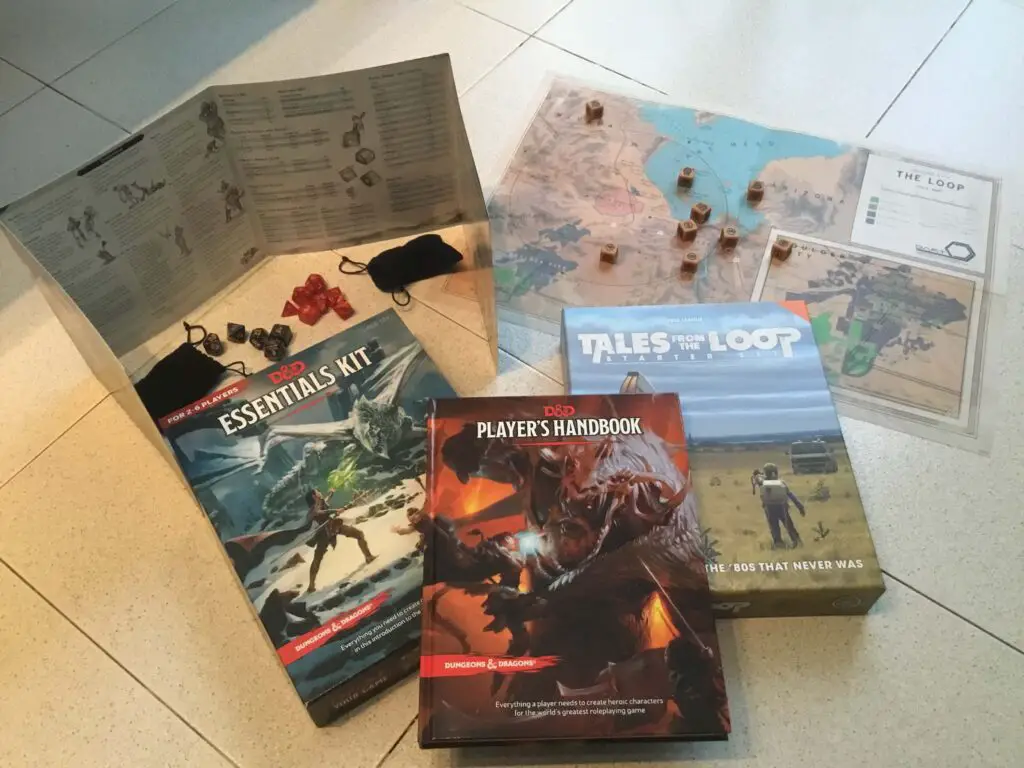Okay, so you’re teaching advanced students in a conversation class. They’re really high level and just want to develop or maintain their speaking.
What are you going to talk about? If you’re lucky, the students will bring their own ideas for conversation to the class, but often, they’ll expect you to supply interesting topics and prompts.

So you head to Google and search for a big list of conversation topics, right? That might work for a few sessions. But it’ll get boring fast. Or worse, it’ll turn into an interrogation session as you bombard them with endless questions.
There’s a better way. Quite a few better ways, actually. So ditch the long questions lists and get ready for some awesome ideas that’ll make your advanced ESL conversation classes shine!
1. Speculation Station
An aspect of advanced English is the ability to speculate, hypothesise and imagine. Instead of grounding language in the mundane and the known, get your students to join the dots, especially if the results are amusing!
For Speculation Station, you need some subject material. People. Either in photos, videos, or going out and watching actual real-life humans in their natural habitat.
I usually grab a bunch of images from the internet and put them in a slideshow. Images can be just one person’s face, or a group of people together. It doesn’t matter where, when or what they’re doing. A variety is best.

Then students speculate about the people: their job, their relationship status, their wealth, their ideals, their personalities… you can go really deep!
It appeals to everyone’s natural inclination to gossip, but does so without harming anyone (assuming you speculate about total strangers).
Get students to elaborate on the evidence for their speculation – the man must be rich because he’s wearing a smart watch. Or maybe that’s just for show and it’s a cheap ripoff?
It’s fun to challenge and provoke your students into justifying their reasoning and offer a contrast. This leads to debate and more dialogue. Obviously, you should remain respectful and sensitive, even if they are strangers who you’ll never meet.
With a group, you could gamify this activity. Ask them all a question about the subject (e.g. what’s their job?) and get students to secretly write down their answer.
Then they reveal and should find someone they disagree with and debate.

What I love about this activity is it’s repeatable and flexible. As long as you have a variety of images/videos/people to look at, you can do this over several sessions.
Another variation: Use images/videos of unusual places and speculate where they might be. Get pictures of strange objects and speculate on their purpose.
All the while, students are engaged in speaking and are developing those higher-level communication skills.
2. Imaginary Planning
In this activity, you and the students plan something, like a holiday. Of course, it’s called Imaginary Planning because you’re not going to go on that holiday (or are you?).
Holidays are the best ones because there’s lots to get stuck into and it’s suitable for everyone, but you can definitely plan something else: a corporate event, a street party, a research project… anything that’s relevant to your students is great.
The internet is your friend. It’s a wealth of information that students can interact with and learn about on the way.

When I plan imaginary holidays with my students, I get them to go online and search for real flights, hotels and excursions. They read the details and then have a conversation about which one to pick.
The amount of new practical vocabulary they’ll pick up is huge. When comparing hotels, they’ll have to debate advantages and disadvantages of each, referencing particular facilities, location and their gut feeling.
If you’re with an individual student, get them to do most of the work and decision making, but give them guidance, prompts and occasional challenges to get them to explain what they’ve chosen.
When working with a group, your role depends on the maturity of your students. With a younger class, you may have to take the lead to make sure planning goes smoothly and doesn’t get bogged down. With adults, they can manage themselves while you act as a language resource.
And if you have a group of 6 or more, split them up into smaller groups that are easy to manage. 3-5 students per group is best.

No matter what the size of your group, there’s a heavy element of negotiation and compromise in planning something. People have different preferences and they need to come to an agreement.
Although the holiday/event/project will never take place, this activity is about the closest to “real life” English you can get. When people use English for work and travel, they use all the high level language learned here.

Click here to buy 480 ESL Conversation Prompts and never run out of engaging topics!
3. If You Could Change…
A wonderful prompt is If You Could Change:
- something about your home
- people’s opinions about you
- something about the internet
- etc.
What would it be?
First of all, we’re dealing with conditionals. The second conditional mostly, but you can incorporate the third conditional with questions like “If you could change something you did when you were a teenager, what would it be?”
So already the language is challenging. But perhaps more challenging for advanced ESL students is expressing their ideas and desires.
This naturally provokes conversation. Especially when you use the right prompts. What are the best prompts? Well, that depends on your students, so you’ll know better than I do, but my basic advice is: try a bunch of them and see what sticks.

You can keep it personal, focused on the students’ lives, or you can make it a wide-reaching societal discussion, diving into environmental issues, political debates and problems with social media.
Sometimes students might not respond with long explanations. Like this:
Q: If you could change something about your job, what would it be?”
A: My boss.
Q: Why?
A: I don’t like her.
Q: Why not?
A: She’s unpleasant and rude.
And so on. If this happens, you can switch up the format a little. Get your students to think of THREE things they would change (and why). Once they’ve explained them all, get them to decide on the biggest priority.
This way, they’ll think more broadly about the question and hopefully compare the possibilities (which you can help them do).
Another alternative is with groups. Get them to all propose one thing they would change about something important to them all (school, workplace, town, country, etc.).
Then they should try to convince the others of their proposal. Let debate ensue. Then, if you want, put it to the vote and decide on a change.
4. Role Plays
I love role plays. Frequent visitors to this website (and viewers of my YouTube channel) may know this already and are perhaps quite sick of me banging on about it so much.
But there’s a reason I suggest them so often. They’re fantastic. Versatile, engaging and highly effective and developing spontaneous fluency. I use them with lower level and advanced students alike to great success.
Usually, they come in the form of a scenario in which students are given a role. They improvise interactions with other students who have a different role and either resolve a conflict or figure out a solution to a shared problem.
Check out this video to get the full story of why I love role play so much:
With advanced students, however, you can take things to the next level. While role-play scenarios are typically limited to a simple scenario and don’t take that long, you can really extend them with students who have enough language to maintain the flow.
I’ve done this with a lot of my more confident students. We play role-playing games, typically Dungeons & Dragons, although I’ve found other games are a lot easier to get started.
What are these games? Essentially, each student plays the role of a character in an ongoing narrative. This could be an adventure (slaying dragons), a mystery (finding a missing friend) or really anything you could imagine.

As the teacher, you describe the situations and the world you’re in, as well as role-playing some other characters. But the players/students are the main focus. They can do whatever they want, go wherever they like, all by saying that’s what their character does.
And if their actions are risky or difficult, they roll some dice. Rolled well? Great, you succeeded in what you wanted to do. Roll badly? Uh oh, you’re in trouble!
This is an ENDLESS source of conversation. Players can interact with the world, talk to random characters and decide between themselves what they should do in tricky situations.
I can’t recommend it highly enough and soon I’ll be sharing a lot more about how I do it, as well as how to avoid messing it up (yes, from my own experience!)

Click here to buy 480 ESL Conversation Prompts and never run out of engaging topics!
5. If You Were…
This one is similar in structure to If You Could Change… but opens up a different field of conversation. Here are some examples:
- If you were rich, where would you choose to live?
- If you were a professional athlete, what sport would you do?
- If you were an animal, which would you be?
These can range from thoughtful to silly, with a huge variety of possibilities.
Again, we’re looking at conditionals, but there’s also the strange grammatical world of the subjunctive mood. Yes, it exists in English, sort of. You may not have heard about it at school. I certainly hadn’t.
It’s not the most important part of English, but it’s just the kind of thing that advanced learners start encountering. If you’re wondering what the hell the subjunctive mood is, don’t worry, here’s an article that explains it pretty well.
One thing that keeps this kind of activity fresh and less like a question-and-answer session is for students to come up with their own “If you were…” questions.

Encourage them to be creative and even silly, if that’s the kind of class you have. Get them to come up with wild scenarios and ask what you or other students would do.
For example: “If you were alone in a forest in the middle of nowhere with no mobile phone or anything to communicate with and you found a dead body, what would you do?”
In theory, there’s no limit to how long you can keep this activity going. It’ll depend on your student(s) how long it takes before you lose engagement and interest. But you can certainly get a good session out of it, and potentially several more!
6. This Is My
A great way for advanced students to practise their speaking is by presenting something. And presentations are usually a good activity.
However, if you’re doing a conversation class, your students might not be up for formal presentations with slideshows and the whole works. That’s a lot of effort, especially if they have to research things.
Instead, you can get the same results with This Is My, and also transition fluidly into free-form conversation.
Basically, students bring to class an object that belongs to them (or a photo). They give a short speech about what it is and what it means to them.

Then you (and any other students) can ask them questions about the object. Perhaps someone else has one too and can compare. Or maybe it’s something unique and intriguing.
This is a great way to get shy students to share something about themselves and generate bonds between you and your students.
One student might bring a basketball shirt signed by the members of their favourite team. Another might present a dinosaur fossil they found when they were a kid. Another still might show a photo of the bridge they helped build.
I wouldn’t do this activity too frequently as the objects will get less and less interesting. But you can always shake up the format in the following ways:
- This is my hero (talk about inspirations)
- This is my childhood school (talk about growing up)
- This is my favourite song/book/film (share music and entertainment interests)
- This is my first pet (talk about pets and favourite animals)
This activity wouldn’t be out of place in an intermediate classroom. But to make sure you’re challenging your advanced ESL students, use the prompts to kick off wider discussions about the general theme.
Because the objects (or whatever materials brought) are so varied, there’ll always be something new to talk about and more ideas to explore.

Click here to buy 480 ESL Conversation Prompts and never run out of engaging topics!
Conclusion
Hopefully, by this point, you can see the benefits of using repeatable, engaging activities and prompts. A barrage of arbitrary questions you ripped off the internet just won’t cut it.
Instead, you need structures and ideas like those on this list that you can adapt to suit the interests and needs of your particular students.
Yes, you need to do a little work to flesh out those ideas and insert the right topics and language, but it’s a great way to invest your time, with fantastic results!




